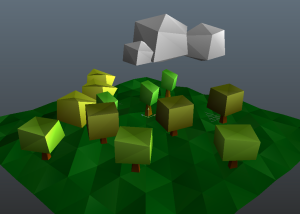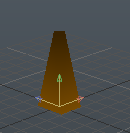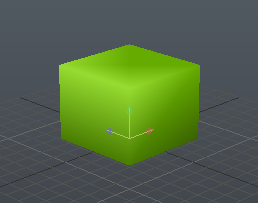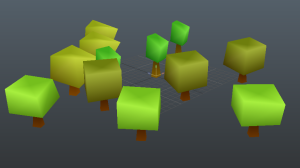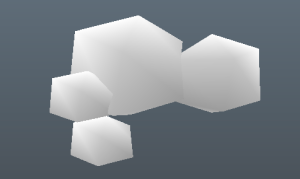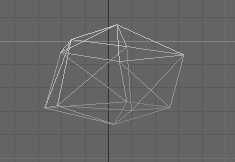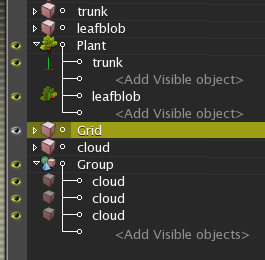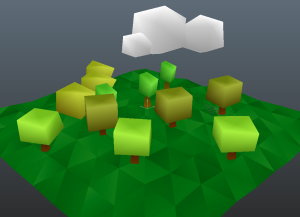Low-poly landscapes are all the rage these days and Rameses was created for exactly this kind of work.
So how do we go about it?
Step 1. the landscape
This is a simple 10×10 grid, Vertex falloff is set to 3 (so that selecting a single vertex will affect up to 3 neighbours) and vertexes pulled upwards. Finally a quick random of the vertexes vertically gives a nice bumpy look:
the flat triangles are then given a green colour and a random colour difference
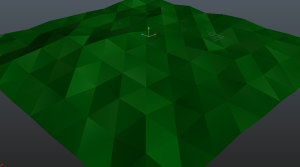
Step 2. the procedural trees
First we need a trunk and a leaf blob which are both simple cubes:
These are given a quick vertex colour so they are not viewed as flat.
Next we use these for the trunk and leaf object in the plant generator. along with some random factors including height, size, colour difference and voila:
Remember the plant generator has full control over the random elements for each plant, it only needs an age parameter.
Last Step. The clouds
This is a group of three identical objects:
Each being a single simple 5 sided custom object with a pointed top and bottom and some quick randomising of the vertexes:
Vertex colours are added (as with the trees) and the group items resized and moved
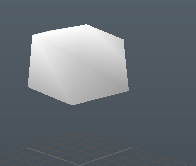
Final Look
Here we can see the Rameses object list showing the three main objects and their hidden construction objects:
First without lighting:
And finally with a single light and no shadows or occlusion:
